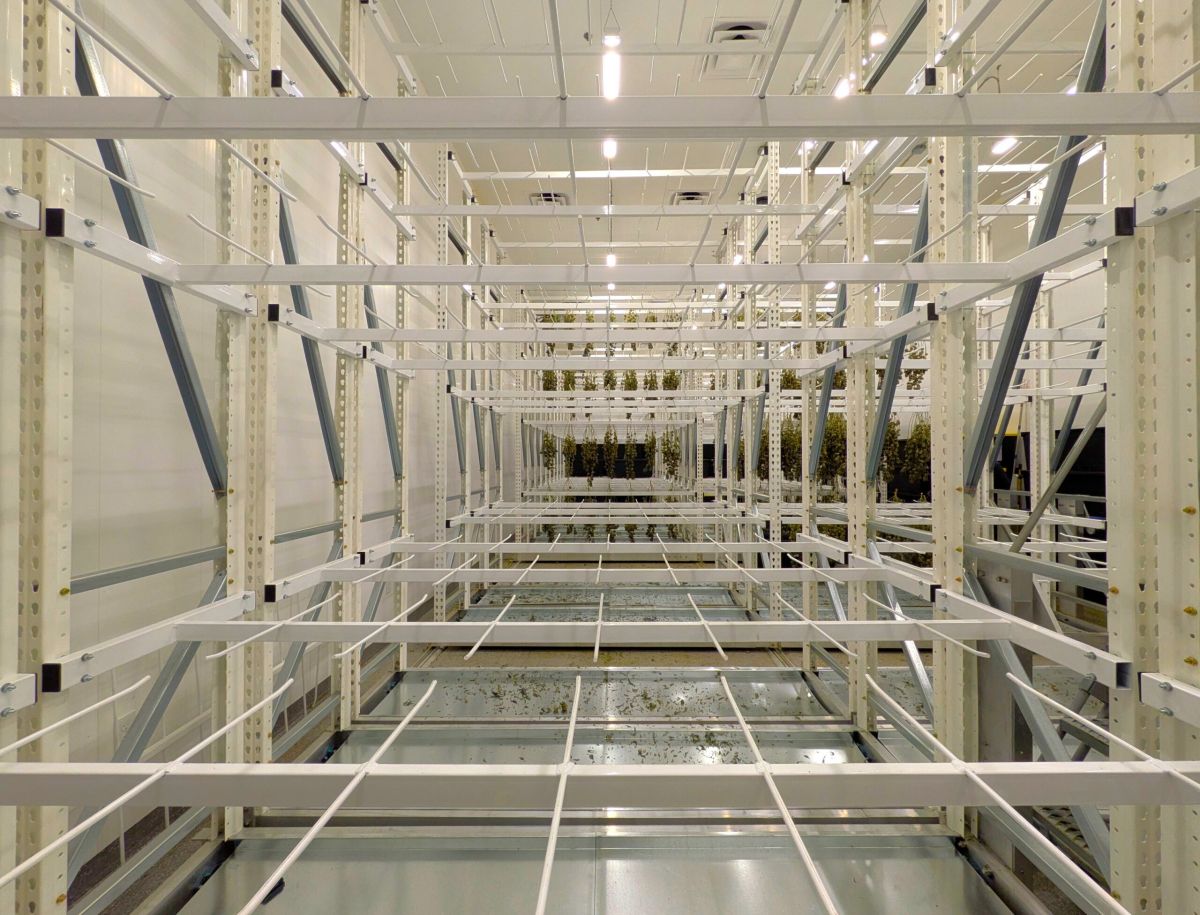Maximize Space In Cultivation Facilities

Choosing the Right Cannabis Racking and Benching
As competition in the cannabis industry continues to increase, more growers look to maximize space and efficiency with equipment such as vertical racking and advanced benching options.
More growers care more about efficiency and yield today than they ever have, just because of the challenging market out there. Instead of building two 1,000-square-foot rooms to get 2,000 square feet of canopy, why not build one 1,000-square-foot room that has 2,000 square feet of canopy in it?
It’s more cost-effective.
While trends indicate growers understand the logic, buying racking and benching represents a significant expenditure for cultivators already pinched by price compression and rising input costs. But by understanding crucial differences in racking and benching, you can make quality decisions and purchases for your grow.
Why Small Details Matter for Longevity and Safety
While the quality of racking and benching products is an obvious consideration, “quality” is a very broad term. Zeroing in on equipment details can bring superior quality into focus.
One simple example is the wheel on a rack, which can vary significantly between racking providers. It can also have implications for employee and plant safety, and equipment longevity. One harvest can pay for the whole system.
Employee safety is paramount when working on vertical racking systems. Compromising on quality isn’t an option. Plants are expensive so these systems ensure they’re stable and well taken care of.
Some racking vendors use zinc-coated steel wheels, which may resist rust but aren’t rustproof. After a year or two in a production setting, those wheels will start to wear down and cause problems, in sharp contrast to rustproof stainless steel. Medical-grade solid stainless-steel wheels, like the 4.5-inch wheels allow no rust.
Stronger, Safer, Longer-Lasting Racks
Metal thickness is another primary consideration when comparing the overall quality of racking and benching equipment. Ask questions and look closely at what you may buy.
It’s important to look at diameters of hardware. For example, bolts and nuts, the wheels—the actual thickness of all the metal. If your wall thickness of a tube is only an eighth of an inch versus a quarter inch, you won’t actually know that without seeing the inside.
While two pieces of equipment may look the same, differences in metal thickness impact stability and longevity of the structural components. Thinner metal will start to bow over time and cause binding problems with your racking and benching products.
Weight capacity of the racking and benching products must also be taken into consideration. Industrial-capacity racking has the weight capacity to hold much more than a plant. The same quality should extend to peripherals, such as plastic trays.
Whatever your goals and plans for racking and benching, working with a quality provider that offers services from engineering and design to full installation can be key to seeing your dreams for your grow fulfilled. What are you waiting for? Maximize your space and increase your yield today!